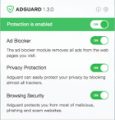What is ExtendedField
ExtendedField is a potentially unwanted application (PUA) that belongs to the Adware family. Adware is type of software developed to inject adverts into your Internet surfing or even desktop experience. Adware can be designed to modify your home page, search engine, search results, or even add toolbars to your web browser. Adware run in the background when surf the Net, and it can slow down your Mac and affect its performance.
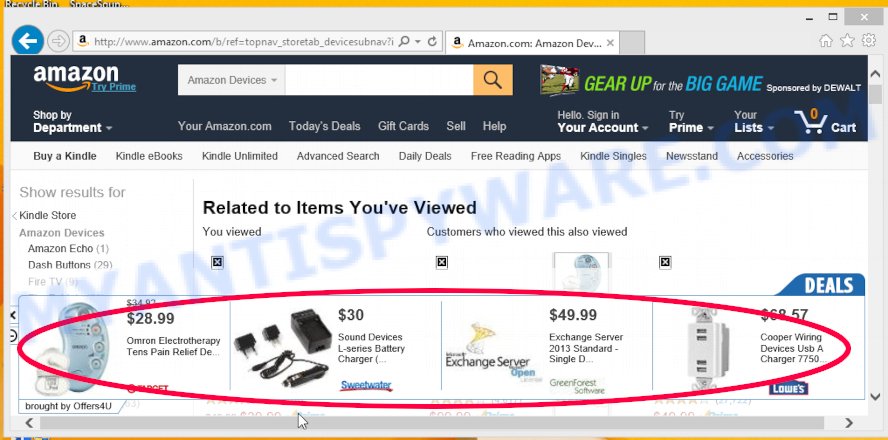
Unwanted ads
Even worse, ExtendedField can analyze the location and which Internet web sites you visit, and then present advertisements to the types of content, goods or services featured there. Its authors can collect and sell your browsing information and behavior to third parties.
If your internet browser has been affected by the adware, you must have done any of the steps below. Once you’ve removed ExtendedField from your MAC by following our few simple steps below, make sure not to commit the same mistakes again in the future.
How does ExtendedField get on your computer
Usually, adware software gets into your MAC system as part of a bundle with free software, sharing files and other unsafe software that you downloaded from the Internet. The makers of adware software pays software authors for distributing adware within their applications. So, additional applications is often included as part of the installation package. In order to avoid the installation of any adware software: select only Manual, Custom or Advanced installation mode and uncheck all additional applications in which you are unsure.
Threat Summary
| Name | ExtendedField, ExtendedField 1.0 app |
| Type | adware, potentially unwanted app (PUA), Mac virus, Mac malware |
| Detection Names | Trojan-Downloader.OSX.Adload, Program:MacOS/Vigram.A, MacOS.Agent-MT, OSX.Trojan.Gen, Osx.Adware.Cimpli, Adware.MAC.Generic, Adware/Adload!OSX and ApplicUnwnt |
| Distribution | Free software installers, torrent downloads, dubious pop up advertisements and fake software updaters |
| Symptoms | Every time you perform an Internet search, your web-browser is redirected to another webpage, pop ups and new tabs are loaded without your request, unwanted application installed without your consent, new toolbars in your internet browser, unwanted changes in your internet browser like using a new default search provider, your web-browser slows to a crawl. |
| Removal | ExtendedField removal guide |
How to Remove ExtendedField adware (removal instructions)
There are a simple manual tutorial below which will assist you to get rid of ExtendedField adware from your Mac OS computer. The most effective solution to get rid of this adware is to follow the manual removal guidance and then run MalwareBytes AntiMalware (MBAM) automatic utility (it is free). The manual way will assist to weaken this adware and these malicious software removal utilities will completely delete ExtendedField adware and revert back the Safari, Chrome and Firefox settings to default.
To remove ExtendedField, perform the steps below:
- Remove profiles created by ExtendedField
- Uninstall ExtendedField associated software by using the Finder
- Remove ExtendedField related files and folders
- Scan your Mac with MalwareBytes
- Remove ExtendedField from Safari, Chrome, Firefox
- How to stay safe online
- To sum up
Remove profiles created by ExtendedField
ExtendedField can install a configuration profile on the Mac system to block changes made to the browser settings. Therefore, you need to open system preferences, find and delete the profile installed by the adware.
Click Apple menu ( ![]() ) > System Preferences.
) > System Preferences.
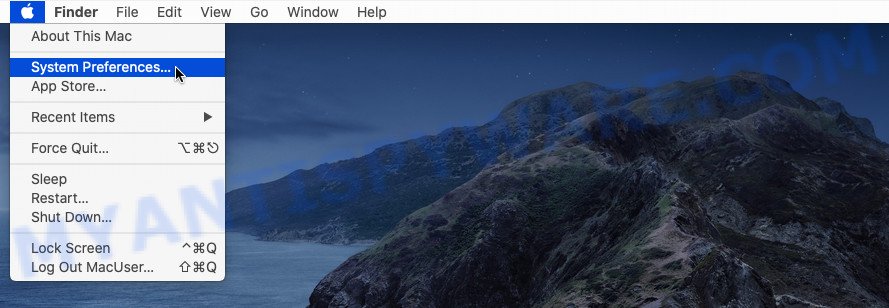
In System Preferences, select Profiles. if there is no Profiles in the list of preferences, that means there are no profiles installed on the Mac. If there is Profiles in the list, then click on it, then select a profile related to ExtendedField.
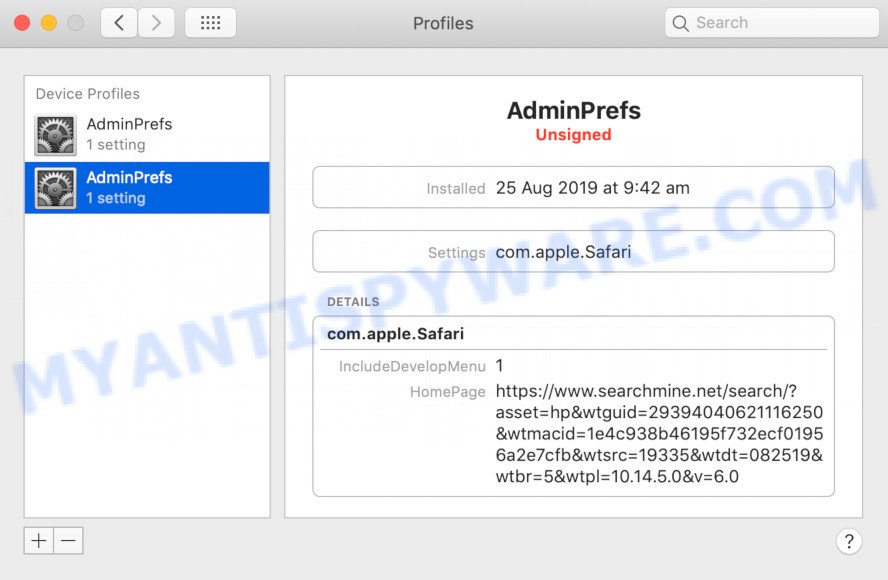
To delete a malicious profile, click on the minus button ( – ) located at the bottom-left of the Profiles screen.
Uninstall ExtendedField associated software by using the Finder
It’s of primary importance to identify and get rid of browser hijackers, adware software and PUPs through ‘Applications’ section of your Finder.
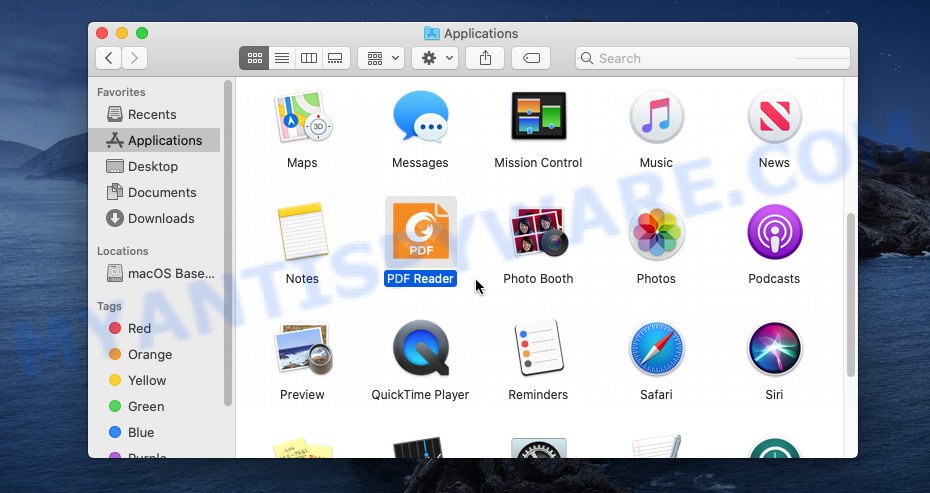
- Open the Finder.
- Click “Applications”.
- It will open a list of all applications installed on the MAC.
- Scroll through the all list, and remove suspicious and unknown applications. Pay maximum attention to the application you installed last.
- Drag the questionable application from the Applications folder to the Trash.
- Empty Trash.
Remove ExtendedField related files and folders
Now you need to try to find ExtendedField related files and folders, and then delete them manually. You need to look for these files in certain directories. To quickly open them, we recommend using the “Go to Folder…” command.
ExtendedField creates several files, these files must be found and removed. Below is a list of files associated with this unwanted application.
- /Library/LaunchDaemons/com.ExtendedField.system.plist
- ~/Library/LaunchAgents/com.ExtendedField.service.plist
- /Library/Application Support/.(RANDOM)/System/com.ExtendedField.system
- ~/Library/Application Support/.(RANDOM)/Services/com.ExtendedField.service.app
Some files created by ExtendedField are hidden from the user. To find and delete them, you need to enable “show hidden files”. To do this, use the shortcut CMD + SHIFT + . Press once to show hidden files and again to hide them. There is another way. Click Finder -> Applications -> Utilities -> Terminal. In Terminal, paste the following text: defaults write com.apple.finder AppleShowAllFiles YES

Press Enter. Hold the ‘Option/alt’ key, then right click on the Finder icon in the dock and click Relaunch.
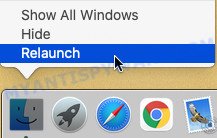
Click on the Finder icon. From the menu bar, select Go and click “Go to Folder…”. As a result, a small window opens that allows you to quickly open a specific directory.

Check for ExtendedField generated files in the /Library/LaunchAgents folder

In the “Go to Folder…” window, type the following text and press Go:
/Library/LaunchAgents
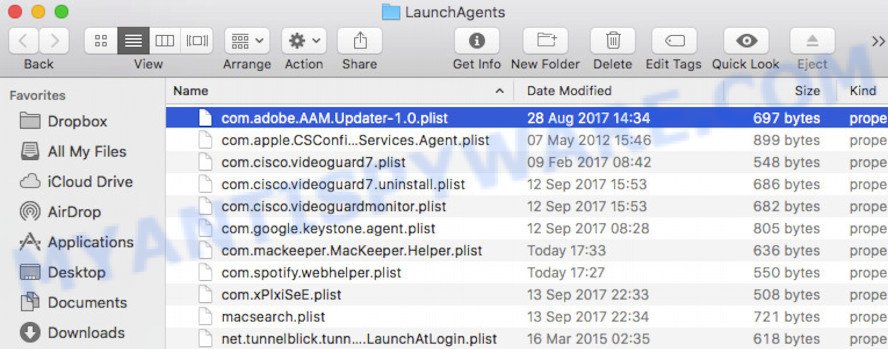
This will open the contents of the “/Library/LaunchAgents” folder. Look carefully at it and pay special attention to recently created files, as well as files that have a suspicious name. Move all suspicious files to the Trash. A few examples of files: macsearch.plist, com.google.defaultsearch.plist, , com.machelper.plist, search.plist, com.net-preferences.plist, installapp.plist and com.ExtendedField.service.plist. Most often, potentially unwanted programs, adware and browser hijackers create several files with similar names.
Check for ExtendedField generated files in the /Library/Application Support folder

In the “Go to Folder…” window, type the following text and press Go:
/Library/Application Support
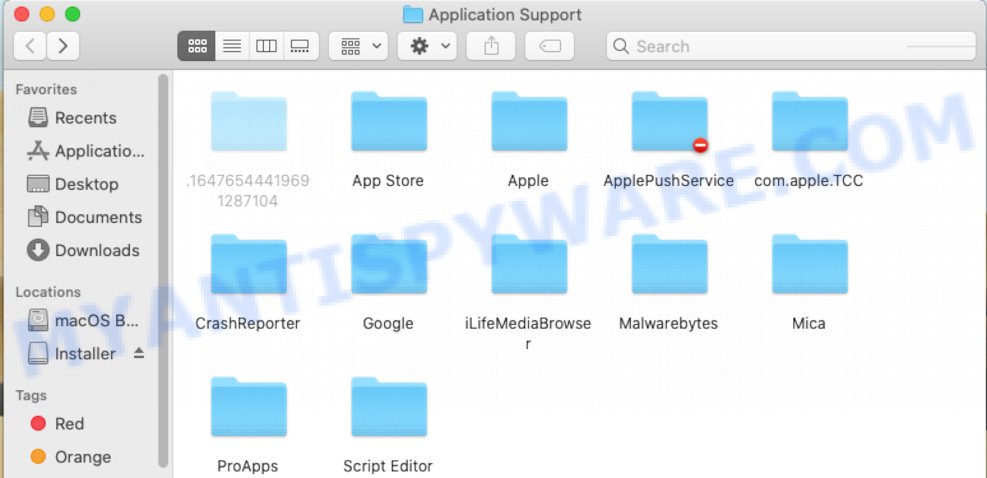
This will open the contents of the “Application Support” folder. Look carefully at its contents, pay special attention to recently added/changed folders and files. Check the contents of suspicious folders, if there is a file with a name similar to com.ExtendedField.system, then this folder must be deleted. Move all suspicious folders and files to the Trash.
Check for ExtendedField generated files in the “~/Library/LaunchAgents” folder

In the “Go to Folder…” window, type the following text and press Go:
~/Library/LaunchAgents

Proceed in the same way as with the “/Library/LaunchAgents” and “/Library/Application Support” folders. Look for suspicious and recently added files. Move all suspicious files to the Trash.
Check for ExtendedField generated files in the /Library/LaunchDaemons folder
In the “Go to Folder…” window, type the following text and press Go:
/Library/LaunchDaemons

Carefully browse the entire list of files and pay special attention to recently created files, as well as files that have a suspicious name. Move all suspicious files to the Trash. A few examples of files to be deleted: com.search.system.plist, com.machelper.system.plist, com.macsearch.system.plist, com.ExtendedField.system.plist and com.installapp.system.plist. In most cases, adware, potentially unwanted programs and browser hijackers create several files with similar names.
Scan your Mac with MalwareBytes
If you carefully followed the previous steps, then you should be able to remove ExtendedField. Of course, very often browser hijackers, adware and potentially unwanted programs hides on a Mac device, disguising itself as legitimate apps and files. Therefore, in some cases, it is difficult for an inexperienced user to decide whether a particular file is part of adware software, potentially unwanted programs and browser hijackers. Therefore, we suggest you to run MalwareBytes AntiMalware to scan the Mac device.
Download MalwareBytes Free by clicking on the following link.
21178 downloads
Author: Malwarebytes
Category: Security tools
Update: September 10, 2020
Once downloading is done, close all programs and windows on your computer. Run the saved file. Follow the prompts.
The MalwareBytes Free will automatically start and you can see its main screen like below.
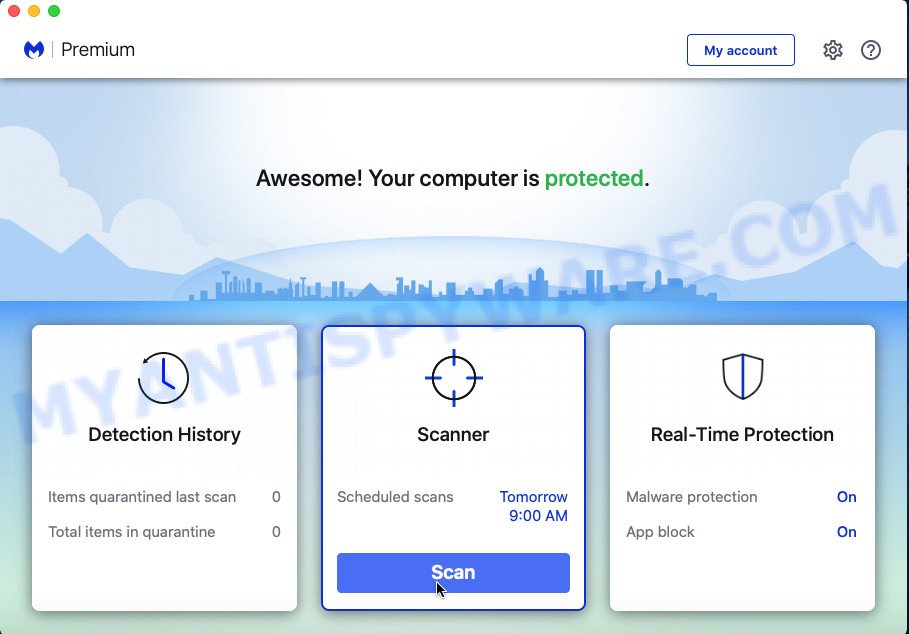
Now press the “Scan” button to search for ExtendedField adware. Depending on your Apple Mac, the scan can take anywhere from a few minutes to close to an hour. When a malware, adware or PUPs are found, the count of the security threats will change accordingly.

When MalwareBytes Free has finished scanning, MalwareBytes will display a scan report. Make sure all items have ‘checkmark’ and click the “Quarantine” button. The MalwareBytes Anti Malware (MBAM) will remove ExtendedField adware software and move the selected items to the Quarantine.
Remove ExtendedField from Safari, Chrome, Firefox
This step will show you how to remove harmful extensions. This can remove ExtendedField adware and fix some browsing problems, especially after adware infection.
You can also try to get rid of ExtendedField adware by reset Chrome settings. |
If you are still experiencing problems with ExtendedField removal, you need to reset Mozilla Firefox browser. |
|
How to stay safe online
In order to increase your security and protect your MAC system against new unwanted advertisements and harmful web-pages, you need to use adblocker program that stops an access to malicious ads and web-pages. Moreover, the application may block the display of intrusive advertising, that also leads to faster loading of web pages and reduce the consumption of web traffic.
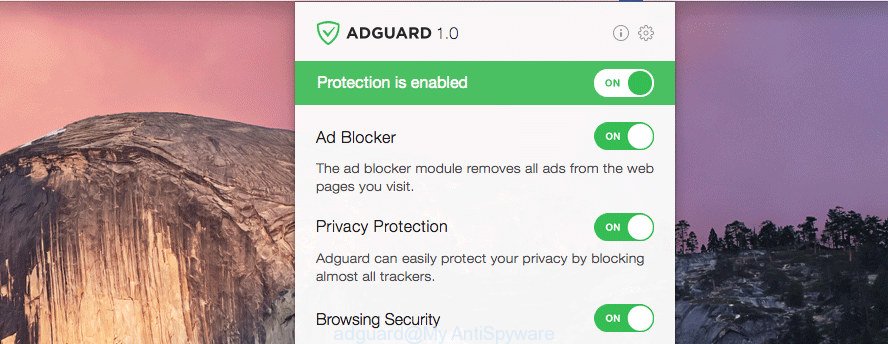
- Installing the AdGuard is simple. First you’ll need to download AdGuard by clicking on the link below.
AdGuard for Mac download
3896 downloads
Author: © Adguard
Category: Security tools
Update: January 17, 2018
- When the downloading process is done, start the downloaded file. You will see the “Setup Wizard” program window. Follow the prompts.
- When the install is done, click “Skip” to close the setup application and use the default settings, or click “Get Started” to see an quick tutorial that will help you get to know AdGuard better.
- In most cases, the default settings are enough and you don’t need to change anything. Each time, when you run your Apple Mac, AdGuard will start automatically and stop intrusive advertisements, block malicious and misleading web-sites.
To sum up
Once you’ve complete the step-by-step guide above, your MAC should be clean from the ExtendedField adware and other malware. The Mozilla Firefox, Safari and Chrome will no longer redirect you to unwanted websites and online ads. Unfortunately, if the few simple steps does not help you, then you have caught a new adware software, and then the best way – ask for help here.

